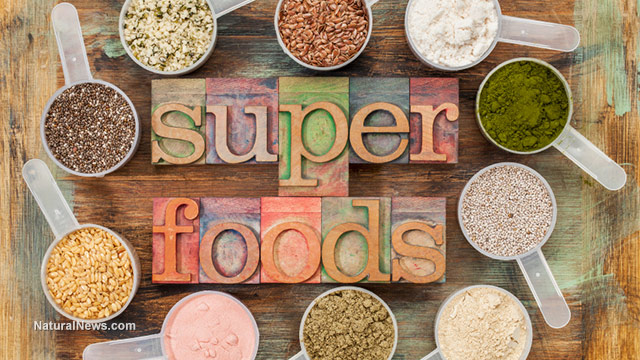Blog
9 health buzz words: sorting the sweet from the sour
 In this day and age, more people are becoming interested and aware of their health.
In this day and age, more people are becoming interested and aware of their health.
To keep up with this demand the health and fitness industry is in full swing, throwing many a buzz words and catchy marketing slogans our way. However it’s important to decipher what these terms really mean in order to make well informed choices about the food we’re eating.
Here’s a quick guide:
- Superfoods
Definition: ….there isn’t one.
That’s right, technically this one isn’t clearly defined. The term ‘superfood’ is generally used to describe foods that are dense in nutrients. Which is great! More of these please.
However, as there are no strict guidelines as to what is classed as a ‘superfood’, it’s a little unclear as to the number or types of nutrients a food must have to make the cut.
Tread carefully as this can be a marketing landmine!
- Toxin
Definition: a poison of plant or animal origin, often derived from microorganisms (bacteria and the like!) that stimulates adverse reactions in our bodies.
This one sounds a little scary and, rightly so, a certain amount of caution is required!
However, it’s important to consider what makes something toxic. It’s all about the dosage (i.e. how much we consume). All substances have a “no affect” “optimal affect” and “toxic affect” zone. It’s just the size of these zones that make the difference. For example, an optimal amount of water is 2 L per day, but even too much time spent at hydration station (around 6 L) can be toxic and cause our cells to swell and burst. Yikes! Many chemicals (e.g. mercury in fish) are fine to consume in low doses (roughly 2 – 3 serving per week)1.
Our body is a pretty sophisticated machine and has fantastic ways (namely the liver and kidneys) of detoxifying moderate amounts of not-so-friendly substances and eliminating them from our bodies. Nourishing our bodies with nutrient dense foods will make sure that these detoxifying systems are working at their best – so no need to reach for the latest “detox” diet, juice or supplement.
- Chemicals
Definition: a distinct compound or substance, can be artificially prepared or natural.
Similarly to toxins, the word ‘chemicals’ makes us weary and teases our mind with images of mad scientists and the like. Chemicals can be natural (e.g. water or citric acid) or manmade (e.g. aspirin or aspartame) and can be both good AND bad.
While the words ‘chemicals’ and ‘toxins’ are generally used legitimately, they are often used for scaremongering. Keep your eyes peeled!
- Organic
Definition: produced without the use of non-naturally derived fertilisers, pesticides or other artificially derived chemicals.
While organically grown food is a great option, it doesn’t necessarily mean ‘healthy’. Is organic chocolate better for you? Is organic ice cream better for you? Sadly not so much.
Foods that are not organic are not necessarily bad either. Chemicals used in food processing must adhere to the Food Standards Australia and New Zealand (FSANZ), and any trace amounts will not have a serious impact on your health. Every year, FSANZ performs a residue survey to check the levels of pesticides found on fruit and veg that make our way to our tables, lunchboxes and pantry’s, making sure any residues found are well below the limits set for adverse health effects.
However, there are some great benefits to buying organic. Organic produce can, in some cases, have a higher nutrient density2. Organic farming also helps to preserve agricultural diversity and reduce pollution in water and soils.
- Natural
Definition: Existing or derived from nature (not made by man)
‘All-natural’ means healthy right? Well not exactly. While natural is generally best, health food promoters can often use this one a little deceptively. After all, sugar is natural, solanine is natural, asbestos is natural…You get the gist.
- Antioxidant
Definition: A substance that inhibits the oxidation of other molecules, and neutralises free radicals.
Free radicals are (generally speaking) highly reactive molecules produced as by-products from chemical reactions in our cells, exposure to different conditions or in response to different infections 3. These free-radicals are essential for life, but if in excess, can cause damage to our cells and DNA, which can lead to further health implications such as cancer, heart disease and aging3.
Antioxidants counteract the damaging effects of free radicals. Our bodies produce some antioxidants, but we often need a boost from our diet. Foods high in antioxidants include berries, dark chocolate, red beans, artichokes and pecans…to name a few!
Again, the amount we consume is important. An excess of antioxidants (namely in the form of supplements) has been shown to reduce the life expectancy of those experiencing lung cancer and reduce the positive effects of those who engage in exercise4,5.
The bottom line – consume antioxidants in their natural form!
- Fat-free
Definition: A food or diet not containing fat.
Trans-fats have been associated with adverse health effects such as coronary heart disease6-9. However not all fats are bad, with monounsaturated and polyunsaturated fats contributing to reducing low-density lipoprotein (LDL) and improving insulin sensitivity10-17.
‘Fat-free’ is often perceived as ‘healthy’ or ‘I-can-eat-as-much-as-i-want-yay!’ Hate to be the bearer of bad news, but as we know, many of these foods are high in sugar or other nasties. Always read the label and take note of the nutritional content of these products.
- Gluten free
Definition: A food or diet not containing gluten.
Sadly, gluten free is not synonymous with healthy. In fact, the majority of gluten free breads (for example) use rice flour and other substitute ingredients which have a high glycaemic index, meaning they elevate your blood sugars quickly. Similarly, gluten free chocolate, lollies and the likes again – doesn’t mean healthy. Sorry.
- Electrolyte-formulas
Definition: contain mineral salts (ions) to replenish the body’s water and electrolyte concentrations after dehydration.
Ask yourself – are you an Olympic athlete? Are you the next Usain bolt or Michael Phelps? If the answer is ‘no’ then take note. While electrolyte formulas such as sports drinks do indeed help to replenish electrolyte balance, aid rehydration and boost energy, this comes at a cost. Four words: a-lot-of-sugar. The average sports drink contains around 21 g of sugar per serving (that’s around 5 teaspoons!). Best to stick to the water.
By Elyse Dunn PhD (Microbiology & Biochemistry)
References:
1.FSANZ Website (http://www.foodstandards.gov.au/consumer/chemicals/mercury/Pages/default.aspx).
2.Crinnion, W. J. Organic foods contain higher levels of certain nutrients, lower levels of pesticides, and may provide health benefits for the consumer. Alternative Medicine Review (2010).
3.Lobo, V., Patil, A., Phatak, A. & Chandra, N. Free radicals, antioxidants and functional foods: Impact on human health. Pharmacognosy reviews 4, 118 (2010).
4.Ristow, M. et al. Antioxidants prevent health-promoting effects of physical exercise in humans. Proceedings of the … 106, 8665–8670 (2009).
5.Chandel, N. S. & Tuveson, D. A. The promise and perils of antioxidants for cancer patients. New Engl J Med 371, 177–178 (2014).
6.Sacks, F. M. et al. The Effect of Pravastatin on Coronary Events after Myocardial Infarction in Patients with Average Cholesterol Levels. New Engl J Med 335, 1001–1009 (1996).
7.Willett, W. C. Dietary fats and coronary heart disease. J Intern Med 272, 13–24 (2012).
8.Shepherd, J. et al. Prevention of Coronary Heart Disease with Pravastatin in Men with Hypercholesterolemia. New Engl J Med 333, 1301–1308 (1995).
9.Hegsted, D. M. Serum-cholesterol response to dietary cholesterol: a re-evaluation. Am J Clin Nutr 44, 299–305 (1986).
10.Swinburn, B. A., Boyce, V. L., Bergman, R. N., Howard, B. V. & Bogardus, C. Deterioration in Carbohydrate Metabolism and Lipoprotein Changes Induced by Modern, High Fat Diet in Pima Indians and Caucasians. The Journal of Clinical Endocrinology & Metabolism 73, 156–165 (2013).
11.Pelikánová, T., Kohout, M., Válek, J., Bas̆e, J. & Kazdová, L. Insulin secretion and insulin action related to the serum phospholipid fatty acid pattern in healthy men. Metabolism 38, 188–192 (1989).
12.Borkman, M., Storlien, L. H. & Pan, D. A. The relation between insulin sensitivity and the fatty-acid composition of skeletal-muscle phospholipids. The New England Journal of Medicine (1993).
13.Pan, D. A. et al. Skeletal muscle membrane lipid composition is related to adiposity and insulin action. Journal of Clinical Investigation 96, 2802–2808 (1995).
14.Hu, F. B. et al. Dietary Fat Intake and the Risk of Coronary Heart Disease in Women. New Engl J Med 337, 1491–1499 (1997).
15.Vessby, B., Tengblad, S. & Lithell, H. Insulin sensitivity is related to the fatty acid composition of serum lipids and skeletal muscle phospholipids in 70-year-old men. Diabetologia 37, 1044–1050 (1994).
16.Riccardi, G., Giacco, R. & Rivellese, A. A. Dietary fat, insulin sensitivity and the metabolic syndrome. Clin Nutr 23, 447–456 (2004).
17.Storlien, L. H. et al. Influence of Dietary Fat Composition on Development of Insulin Resistance in Rats: Relationship to Muscle Triglyceride and ω-3 Fatty Acids in Muscle Phospholipid. Diabetes 40, 280–289 (1991).














